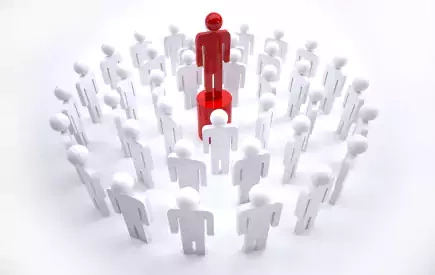How to be a better role model

Managing staff can be tough, but guiding and encouraging those around you can actually make your life easier
Managing even a small team in an independent business can be challenging. But if you take the right approach and give people encouragement when things go well, the task can become a little bit easier.
The science of being a role model and encouraging better behaviour is relatively new, and while you may not think it relates to your day-to-day role, the consequences are incredibly important.
Picture the scene: it’s 1994 and you’re a neurologist studying monkey behaviour and brains. Nirvana have just released their generation-defining MTV Unplugged album, and Noel Gallagher has answered back with “Live Forever”. What a time to be alive.
You’ve left the EEG machine on as you work, and it’s scanning the brain of a particularly observant monkey. You begin to load the monkey’s food dispenser with pellets. It’s strange, because the machine starts unexpectedly making noise. Calling the other scientists over, you carry on loading the pellets into the machine while the monkey watches you. The EEG highlights the activity in its brain. This leads to some serious investigative work, and a few months later you publish a paper on your incredible discovery: “mirror neurons”.
Who’d have thought that we’d still be discovering new types of brain cell as recently as that? Mirror neurons are specifically designed to help us build neural patterns so we can learn from other people’s behaviour. And to a certain extent, this means that Sigmund Freud was right: our early experiences really are essential to our cognitive processes as adults.
The effect of mirror neurons can be observed most clearly in children. This includes how they learn to eat, their communication habits, what teams they support, whether those teams play with a glorious egg-shaped ball or a boringly predictable round one, as well as their attitudes to things like health, and what they understand to be humour, love and support. It’s all a reflection of their environment and the more advanced people (adults) that they observe within it.
Monkey see, monkey do
Although the 1994 findings reinforced the basis of Freud’s developmental theories, he certainly wasn’t the first person to identify the importance of having a good role model. The Stoic philosophers also knew this to be true 2,000 years ago: “Waste no more time arguing what a good man should be. Be one” (Marcus Aurelius), and “Don’t explain your philosophy, embody it” (Epictetus). We have known for thousands of years that leaders need to display positive behaviours. That way, other people are more likely to adopt those positive behaviours.
It’s a technique that’s often used in the military. Young paratroopers regularly end up adopting the same styles, techniques and processes as their NCOs – even their fashion sense, language and haircuts (regardless of how terrible they are), all in the hope that the success of the NCO will pass down to the junior private.
The trick to success is simple: help the individual adopt and repeat positive behaviour by rewarding it. If you reward behaviours that you wish to see repeated, then you’re far more likely to get your desired outcome than if you punish behaviours you don’t want to see.
In short, saying to an individual “You’ve done well, here’s a reward” is far more effective than saying “If you behave in this particular way, I’ll punish you.” In fact, the only thing the latter approach achieves is pushing the individual away from you. And in that case, they’ll soon find a role model who doesn’t threaten or belittle them.
James Elliott is a military mental resilience coach who has worked with the British Army on its OPSMART mental health programme
This is an edited extract from IMI's new MotorPro magazine, received free as part of IMI Membership




